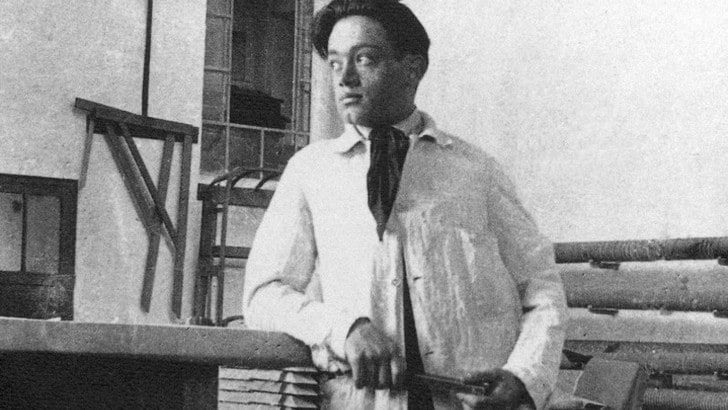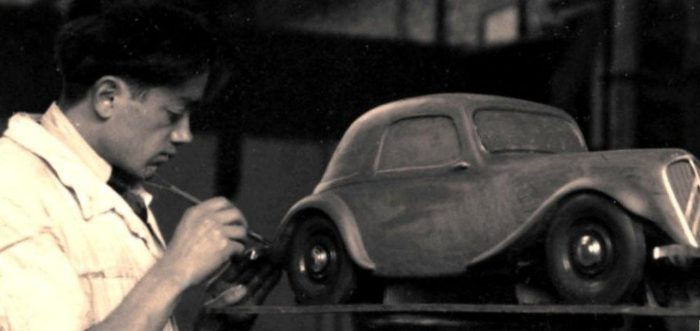[The men who made Citroën] Flaminio Bertoni, father of the DS, 2CV, and Traction
- Jérémy

- Aug 12
- 4 min read

In the pantheon of great names who helped make Citroën a brand apart, the name Flaminio Bertoni resonates with a unique power. If André Citroën was the visionary and André Lefèbvre the engineering genius, Bertoni was unquestionably the artist, the sculptor who gave soul and unforgettable shapes to the creations from the Quai de Javel. From the revolutionary lines of the Traction Avant to the divine silhouette of the DS, and including the friendly face of the 2CV, his pencil and his hands designed audacity and innovation. For this third installment of our series, "The Men Who Made Citroën," we invite you to rediscover the journey of this master of automotive design.
From Varese to Paris: the journey of a visionary artist
Flaminio Bertoni was born in Varese, Italy, in 1903. The son of a carpenter, he dreamed of being a sculptor and discovered an all-consuming passion for automobile coachwork, a passion that led him, at the age of 15, to become an apprentice at the Macchi coachbuilding company. But the Italian horizon soon felt too narrow for his ambition. Encouraged by his wife, Giovanna, who was convinced his talent would fully blossom in the world capital of arts and elegance, he left in 1931 to try his luck in Paris, with his wife and child in tow. The beginning, however, was modest and difficult. He worked for small coachbuilders like Sical and Rothschild, where his talent was underutilized and poorly paid. The turning point in his life came in 1932. A friend informed him that Citroën was looking for a rare profile: a designer with a solid background as a sculptor. Bertoni presented himself at the Quai de Javel. The reception was initially cold. A skeptical department head handed him a technical drawing of a simple door handle and asked him to sculpt it to assess his talent. Faced with a design he considered soulless and inelegant, Bertoni made a bold move. Rather than slavishly reproducing the part, he sculpted his own version in a matter of hours: an ergonomic, fluid, artistic handle. It was a brilliant demonstration of his vision, where function must embrace beauty. The gesture stunned the manager. The audacity paid off: Flaminio Bertoni was hired on the spot. He joined the design office where his creative genius could finally be expressed, marking the beginning of a legendary, sometimes stormy, but incredibly fruitful collaboration with the engineer André Lefèbvre.

Thebirth of legends: from the Traction Avant to the Ami 6
Flaminio Bertoni's work at Citroën is a succession of masterpieces that not only defined their era but continue to fascinate today. His first major achievement, the Traction Avant (1934), was a complete stylistic break. Bertoni imposed a unitary body with fluid, aerodynamic lines and no separate chassis, a radical departure from the boxy cars of its contemporaries. He sculpted the wind as much as the steel.
After the war, he tackled the TPV ("Toute Petite Voiture" or "Very Small Car") project, which would become the legendary 2CV (1948). The design brief was purely functional: "four wheels under an umbrella." Far from limiting him, this constraint stimulated his creativity. He was not aiming for conventional beauty but for intelligent form. He designed its unique silhouette—simple, economical, and instantly recognizable—which would become a universal symbol of freedom and charm.
Then came the crowning achievement of his career: the DS 19 (1955). Unveiled at the Paris Motor Show, it caused a genuine shock. It was more than a car; it was an object from the future. Bertoni conceived it as a sculpture, inspired by the pure shape of a drop of water. Every line was focused on aerodynamics and elegance, from the plunging nose without a traditional grille to the faired-in rear wheels. This was his masterpiece, a "goddess" of the road ("DS" in French is pronounced "déesse," meaning goddess) that single-handedly embodied the genius and avant-garde spirit of Citroën.
Finally, with the Ami 6 (1961), Bertoni once again demonstrated that his creativity was guided by function. To provide maximum interior space and a large trunk on a 2CV platform, he devised a bold solution: the famous inverted or "Z-line" rear window. While this stylistic choice was controversial at the time, it reflected his refusal to take the easy way out, making design an intelligent response to a technical constraint. Tragically, death took him suddenly in February 1964 from a heart attack, while he was already working on the initial sketches of DS coupé.
Flaminio Bertoni is and will remain one of the pillars upon which Citroën built its legendary identity. Much more than a simple designer, he was a complete artist who viewed the automobile as a total work of art. His bodywork designs, each more astonishing than the last, bear witness to his unique talent and the considerable extent to which he was ahead of his time. By giving form to audacity, he durably forged the image of innovation and creativity that still defines the brand with the chevrons today.






Comments